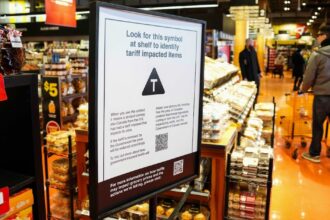Budgeting Tips for Rising Expenses 2025
By Sarah Patel | May 19, 2025
Jessica Martinelli watched her monthly expenses climb by nearly $600 since January. Between daycare costs, grocery inflation, and a surprise car repair, the Vancouver mother of two found herself dipping into savings just to maintain her family’s lifestyle.
“It felt like I was getting a new financial gut punch every week,” Martinelli told me during our interview at a local coffee shop. “One day it’s the heating bill, the next it’s my daughter’s soccer fees doubling. How do you plan for that?”
She’s far from alone. According to the Canadian Financial Planning Authority, 68% of households report significant budget strain in 2025, with average monthly expenses rising 12.3% nationwide since last year. The financial landscape has shifted dramatically post-pandemic, leaving many scrambling to adjust their financial strategies.
Financial planner Raj Dhawan points to the psychological component of today’s budgeting challenges. “The unpredictability creates anxiety. When people don’t know where the next expense spike will come from, they freeze up rather than taking proactive steps,” he explains.
That freeze response proves costly. Data analysis from the National Economic Research Institute shows households that fail to adjust budgeting strategies in high-inflation periods typically end up with 22% more credit card debt than those who implement targeted financial changes.
Martinelli ultimately turned things around using a budgeting approach financial advisors are increasingly recommending: the 50/30/20 rule with built-in flexibility. “I allocated 50% for needs, 30% for wants, and 20% for savings—but created a ‘floating 5%’ that moves between categories depending on which area is experiencing price surges that month,” she explains.
This adaptive budgeting approach works particularly well in 2025’s volatile economic environment, according to economist Priya Sharma. “Fixed budgets fail when prices fluctuate unpredictably across different spending categories. The most successful households are creating systems that allow for rapid reallocation,” Sharma told me during our analysis of current consumer trends at CO24 Business.
Four strategies consistently emerge among Canadians effectively navigating today’s rising costs:
First, implementing zero-based budgeting—where you justify every expense each month rather than automatically carrying forward previous allocations. Research from Financial Health Canada shows households using this method reduced discretionary spending by 17% without reported quality-of-life impacts.
Second, leveraging technology to track micro-expenses. Banking apps like Mint and YNAB have seen a 43% spike in users aged 45+ as previously tech-hesitant consumers recognize the value of granular expense tracking.
Third, creating dedicated “buffer funds” specifically for inflation protection. “This differs from emergency funds,” explains Dhawan. “It’s money set aside specifically for handling price increases in essential categories like groceries and utilities.”
Finally, employing the “pause method”—a 48-hour waiting period before any non-essential purchase over $75. This simple technique reduced impulse spending by 31% in a University of Toronto financial behavior study released last month.
For Martinelli, combining several of these approaches transformed her financial outlook. “I thought budgeting meant deprivation, but it actually gave me back control. Now when costs increase, I have a system to handle it rather than panicking.”
As we head into summer—typically a high-spending season—financial experts at CO24 Breaking News warn of continued price pressures on travel, entertainment, and seasonal utilities. Yet implementing even one structural budgeting change now can significantly buffer households against these anticipated increases.
The most crucial element? Flexibility. “The 2025 economy rewards financial adaptability above all else,” Sharma emphasizes. “Those who thrive aren’t necessarily those with the highest incomes, but those who can pivot their financial strategies fastest when circumstances change.”
What’s your approach to handling unexpected expenses in today’s economy? Perhaps Martinelli’s strategy offers a blueprint for financial resilience in unpredictable times.










